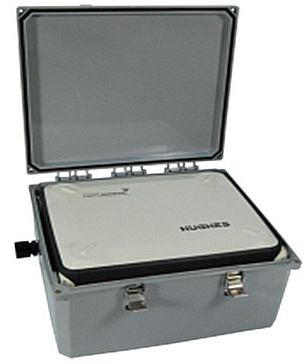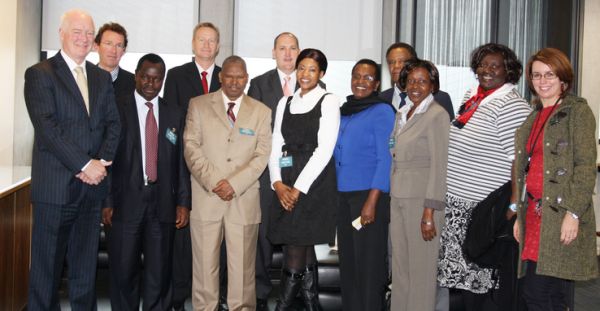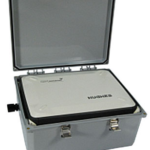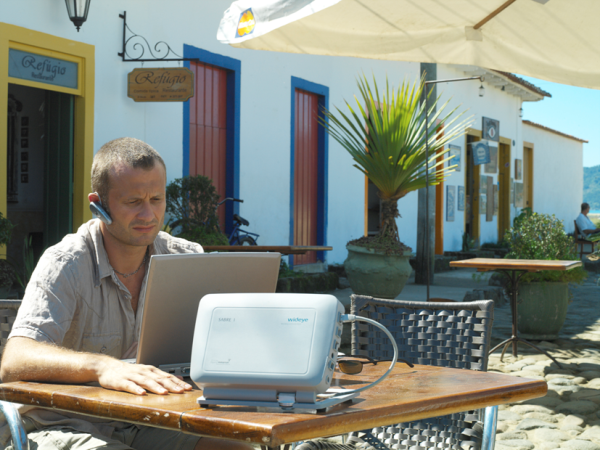In remote locations around the world, Companies are looking at new and improved ways of upgrading their communications. High speed data is common place in the terrestrial sector however off the grid, it’s a rare commodity. Fast moving data is a necessity in remote areas to allow businesses to stay on top of potential network and/or equipment issues in real time. One of the most popular ways the satellite industry is impacting global business is via the BGAN Satellite Terminal, or Broadband Global Area network, a high speed satellite broadband modem that transmits simultaneous voice and data from anywhere, to any location on the planet when terrestrial connectivity is not an option.
We have put together a list of ten reasons why it’s should be a requirement of every business operating in remote locations of the world that need to access critical network and equipment data, to consider the BGAN Satellite Terminal.
Customization– The BGAN terminal comes in different styles and sizes of varying degrees of bandwidth capability depending on the requirements with the particular business application. In the Utilities or energy industry for example, a Wifi capable terminal is ideal for a Smart Grid Meter application that is often installed anywhere from 20 to 30 feet high. On the other end of the spectrum, an adventurer that is climbing Mount Kilimanjaro and wishes to stay in contact with relatives and buddies and update his blog daily may only require to be hard wired in through an ethernet cable to his computer from the terminal.
Global Coverage – operates off of the I-4 satellites which are geosynchronous birds that function via the Inmarsat network covering the Atlantic, Pacific and Indian Ocean Regions. This group of satellites covers the footprint of 95% of the earth?s surface. BGAN Satellite is truly a worldwide communications solution.
Simple-To-Use – BGAN terminals are developed to be a streamlined and user-friendly technology, making even complex data transfers a simple task. With no technical expertise required, and less than 5 minutes to establish voice or data communications, these terminals bring with them convenience and ease-of-use
Unobtrusive and Adaptable– There are many options when it comes to portable, fixed or vehicular BGAN terminals. This ability to decide the role the terminals will play, provides organizations with the features and performance options to suit many different operational needs. BGAN is extremely flexible in the various roles that it can play to meet the demands of unique organization applications.
Various Applications– It’s amazing how 1 BGAN unit, basically the size of an average laptop, can do so many things. Some of the applications that BGAN is most utilized for are email, browsing the web, secure VPN, SMS, videoconferencing, file transfers, live video streaming and remote surveillance, just to name a few.
Mobile Work Force– In big cities, WiFi does exist however it is the victim of range challenges. As long as the end user is outside, with direct line of site to the I4 satellites, broadband global area network is not plagued by these range issues.
Designed for All Industries– Developed with every possible scenario in mind, BGAN Satellite terminals have the potential to be used by any industry that has a need for remote communications where cell phones and Wifi access points don’t exist. Industries such as Mining, Oil/Gas and the Utilities, as well as for individual projects for journalists, aid workers, and engineers, everyone who requires dependable and secure broadband data and voice access.
Simultaneous Voice and Broadband Data– With a single BGAN terminal, you can access data applications in remote areas at high speeds, while making a phone call at the same time. You are able to select guaranteed data rates on demand with voice and data capability.
Performance – Data connection speeds of up to half a megabit are common in BGAN terminals. Add to that a portfolio of IP streaming rates of 32, 64, 128, 176, 256, and BGAN X-Stream, along with an ability to support ISDN at 64 kbps, you have some of the fastest world-wide communications technology around. This bandwidth capability is more than enough to meet the needs of most businesses that require a virtual remote office.
Network Reliability and Longevity -The geostationary location of satellites mean that service is not affected by typical terrestrial outages, which are commonly experience with cellular technology, particularly in extreme weather or when communications are compromised from a natural or man-made disaster for example. BGAN terminals provide the reliability you need to be confident in your business.
As you can see, there are many benefits to using BGAN terminals for your organization. To get more information on these systems




 These features make the Hughes 9201-M2M ideal for various oil, gas, and water applications. These applications include well data collection such as electronic flow management, pressure, and custody transfer data reading; remote monitoring and control of the compressor responsible for pushing high volumes of natural gas through the pipeline; and the transfer of critical and time-sensitive command and control instructions to downhole systems. Such features permit engineers to access sites remotely, without having to dispatch personnel, which preserves resources.
These features make the Hughes 9201-M2M ideal for various oil, gas, and water applications. These applications include well data collection such as electronic flow management, pressure, and custody transfer data reading; remote monitoring and control of the compressor responsible for pushing high volumes of natural gas through the pipeline; and the transfer of critical and time-sensitive command and control instructions to downhole systems. Such features permit engineers to access sites remotely, without having to dispatch personnel, which preserves resources.

 Along with these important factors, simple instructions are supplied with the phone, including how to employ the antenna and receive incoming calls, along with how to display the user’s GPS position. This user-friendly approach allows those in emergency situations to focus on getting rescued, rather than figuring out the intricacies of their communications device.
Along with these important factors, simple instructions are supplied with the phone, including how to employ the antenna and receive incoming calls, along with how to display the user’s GPS position. This user-friendly approach allows those in emergency situations to focus on getting rescued, rather than figuring out the intricacies of their communications device.


 The Solution
The Solution